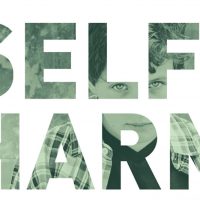Self-Harm
-

How does my lived experience inform my nursing practice?
“Being a CAMHS nurse allows me to be creative and to try to incorporate the most memorable care I received into my practice.”
Read more -

Machine learning approach predicts suicide risk
A study has evaluated the performance of machine learning on routinely collected electronic health records, as a possible approach to accurately screen and detect adolescents at risk of making suicide attempts.
Read more -

Violent self-harm may predict subsequent suicide
Researchers in Sweden have found that violent methods of self-harm requiring hospitalization may indicate high risk of future suicide in adolescents and young women.
Read more -

Navigating an unfamiliar world: how parents of young people that self-harm experience support and treatment
Participants described a range of reactions to treatment and support for themselves and the young person. We identified three main themes: attitudes towards the young person, practical aspects of help and the need for parents to be involved.
Read more -

Place children and young people at the heart of the strategy – A recent call by a joint UK Select Committee
In their recent 1st joint Select Committee report, May 2018, the Education, Health and Social Care Committees call upon the government to take a stronger stance on child and adolescent mental health and to join up the appropriate services in a way that places children and young people at the heart of its strategy.
Read more -

The family environment mediates risk of self-harming
Non-suicidal self-injury (NSSI) constitutes any deliberate physical injury to oneself that is not life-threatening. It is a behaviour that commonly starts during adolescence. Childhood family adversity (CFA) is associated with NSSI, but the risk pathways between CFA and NSSI are unclear.
Read more -

Self-Harm & Suicide Issue – Foreword from the Editor
As a clinician, it certainly does feel that more and more young people are being referred, following self harm or with suicidal ideas, to the CAMHS service I work in. This nationwide increase in numbers is acknowledged in recent government reports, which are summarised in this edition.
Read more -

Self-harm & Suicide
Self-harm is an increasingly recognised phenomenon and one of the strongest predictors of suicide, which continues to be one of the leading causes of death in young people worldwide. Self-harm can take many forms and may present with or without suicidal intent and both in the context of mental disorder, and without.
Read more -

Self-Harm: The Parent’s View
Though it is not always openly discussed, the impact self-harm has on the individual and their family, can be very distressing. For someone to recover from ‘rock-bottom’ requires support, with family being an obvious source. It makes sense that the pillars of this support system, parents in most cases, feel equipped to support their child in recovering from such an experience. Saying this, there is little research on parents’ perspective of care following self-harm.
Read more -

Tweens, Teens and Technology: The risks and the benefits
Vanessa Garrity talks about the pros and cons of digital technology and social media in young people’s mental health.
Read more